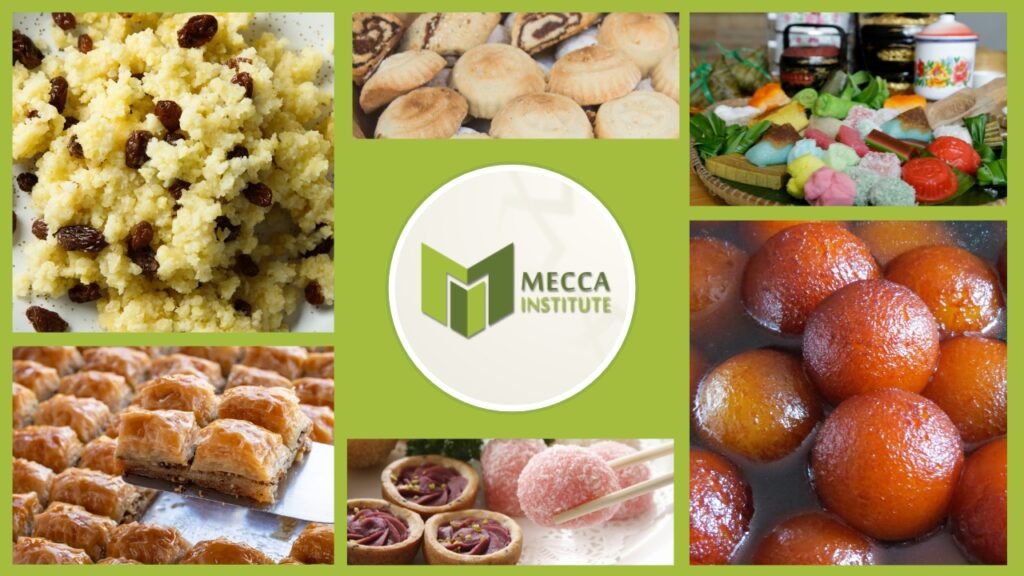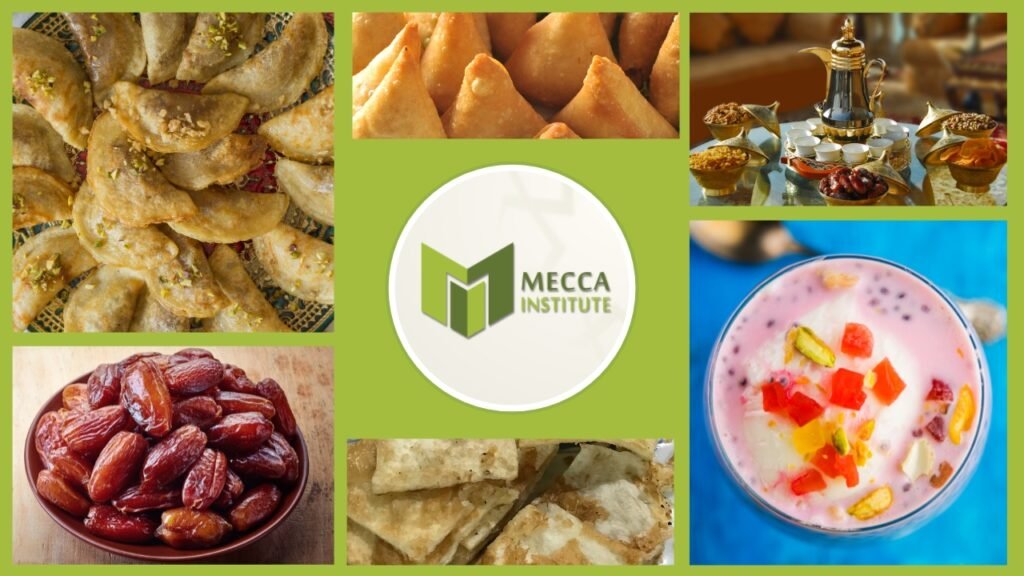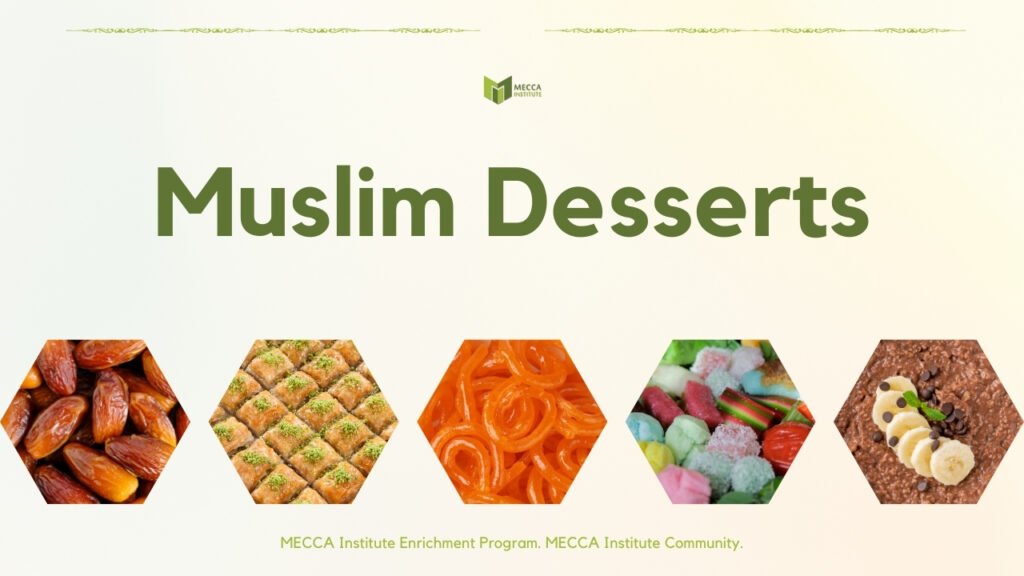Muslim desserts are the backbone of comfort foods, says Imam Daayiee Abdullah, sharing his favorite sweets.
As any other area of Muslim food, dessert is diverse across communities in Africa, Asia, and Europe. My long-term living in China, Egypt, and Saudi Arabia gave me a chance to sample a lot of sweets.
Thanks to the growing Islamic empire, from Arabia and quickly spreading to Africa, the rest of Asia, and even in Europe, Muslims have developed sweet treats that not only satisfy but also carry cultural significance.
Let’s take a look at some of the most cherished Muslim desserts and their role in religious and cultural celebrations.
Traditional Muslim Desserts

Traditional Muslim desserts, like all food, are highly regulated by Sharia. These foods are from the fusion of cultures, trade routes, and historical influences of Islam. Muslim empires have shaped diverse communities over centuries.
Many of these desserts have roots in the Islamic Golden Age. This was a great time when culinary techniques and recipes were exchanged across vast regions. As a result, it created unique fusions.
Sometimes, these desserts stay in one region. A great example is Thiakry, which comes from the Wolof and Fulani people in West Africa. They have long used millet in their cuisine. Over time, though, as Islam spread in the region, dairy like yogurt and condensed milk were added.
Across North Africa, Makroud is a beloved pastry made with semolina, dates, and honey. This delicious Berber dessert comes from Tunisia, but has since spread to Morocco, Algeria, and even Mauritania.
Other times a dish takes off and ends up in multiple regions. Baklava, for example, is one of the most popular Muslim desserts today. You will find this Greek-origin sweet from the Balkans to North Africa. It’s a layered pastry made with filo dough, nuts, and honey or syrup.
From South Asia, Gulab Jamun is an excellent Muslim dessert. These deep-fried dough balls soaked in fragrant sugar syrup are a staple at celebrations.
And, in Southeast Asia, Kueh Lapis, a colorful layered cake, is very popular with Muslim communities in Indonesia and Malaysia.
My favorite from Asia is Sanzi, which is popular among the Hui Muslim community in China. It’s a deep-fried, crispy noodle-like snack made from wheat flour, water, and sometimes sesame seeds.
Therefore, these traditional treats are deeply ingrained in the identity of Muslim societies and continue to be enjoyed across generations.
Cultural Pairings
No matter the occasion from the Islamic calendar, Muslim desserts are never alone on a table. Pairings include specific beverages and dishes that depend on regional customs and traditions.
For example, in West Africa, you will find that fruits are paired with Thiakry. Sliced mangoes, bananas, or dates add natural sweetness and extra texture.
North African desserts like M’hanncha (a coiled almond pastry) will usually come with mint tea. The refreshing nature of the tea complements the nuttiness of the pastry.
In the Middle East, Baklava will almost always come with strong Arabic coffee or mint tea. The bitterness of the coffee balances the intense sweetness of the pastries, which is why it’s a perfect pairing.
Meanwhile, in South Asia, desserts like Jalebi (deep-fried flour spirals soaked in sugar syrup) and Ras Malai (cheese dumplings in sweetened milk) will come with chai. The warmth of the tea strengthens the flavors of these rich, syrupy treats.
In Indonesia and Malaysia, sweets like Dodol (sticky toffee-like candy) and Kueh (colorful cookies) commonly will come with pairings of coconut milk drinks or Teh Tarik. Teh Tarik is a frothy pulled tea.
In my time in Muslim societies, I always found these cultural pairings to add depth to flavors. Try them yourself and you will see.
Muslim Desserts for Eid
Eid foods come twice a year. The first one is the festival marking the end of Ramadan (Eid al-Fitr) and second one is the festival of sacrifice (Eid al-Adha) for Hajj. Therefore, this is a time of joy, family gatherings, and, of course, delicious sweets.
In West Africa, you will find lakh, thiakry, or degue, all sweet millet porridge with curdled milk, for Eid.
In the Middle East, Mamoul cookies, filled with dates or nuts, are plentiful, especiall with strong Arabic coffee.
Sheer Khurma, a rich and creamy vermicelli pudding, is a central part of Eid celebrations across South Asia. People use milk, sugar, dates, and nuts to create a luxurious treat for guests.
In the Balkan, you will find Revani, a semolina cake with lemon syrup, is a common Eid delight.
So, across Muslim communities, sweets symbolize happiness and hospitality during Eid.
Treats for Ramadan

During Ramadan, the first meal after breaking the fast, Iftar, is an important occasion. Desserts play a central role in replenishing energy and providing comfort after a long day of fasting.
For example, in West Africa, Moni (Bouillie de Mil) is extremely popular. This is a warm and nourishing millet porridge. Spices like nutmeg, cinnamon, or vanilla are give it an extra flavor.
In the Middle East, one of the most popular Ramadan desserts is Qatayef. This is a stuffed pancake filled with nuts or sweet cheese, deep-fried, and drizzled with syrup. It looks like Chinese potstickers (see top left in the image above).
In South Asia, Falooda is very popular. This is a cold dessert drink made with rose syrup, vermicelli, basil seeds, and ice cream, is a refreshing Iftar staple. It comes from Persia originally.
Meanwhile, Nangpizi is popular with Muslims in China. It’s a sweet, crispy pastry made from leftover Nang (Uyghur flatbread). They cut it into small pieces, then fry or bake and coat with honey, sugar, or syrup.
Of course, dates are a common dessert during Ramadan in most Muslim cultures. The influence comes from Prophet Muhammad’s recommendation to break the fast with them as dates have high natural sugar content, giving the fasting person an instant energy boost.
If you, also find sweet samosas!
Ramadan is a great time to sample Muslim desserts.
Muslim Wedding Desserts
A Muslim wedding is a grand affair, and desserts play a big role in the celebrations. Many traditional wedding sweets are more indulgent than desserts you would otherwise find in that culture.
For example, in West African weddings, popular desserts include Benachin Sweet Rice (Jollof Rice Pudding). You may also find Kossam (a Fulani milk-based dessert) or Dégué (sweet millet yogurt). They are all of very rich, creamy, and symbolize joy and prosperity.
In the Middle East, all of the filo sweets, such as Baklava or Börek, are wedding staple. They symbolize prosperity and sweetness in married life. You will see married women from the groom’s side spending days making them.
Meanwhile, in South Asian weddings, Barfi (milk-based fudge) and Ladoo (sweet round confections) are very popular. And in Southeast Asian Muslim weddings, you will find colorful desserts like Bubur Pulut Hitam, a black rice pudding with coconut milk that symbolizes wealth and good fortune.
Therefore, Muslim wedding desserts test to have meaning behind them.
Keep it Halal
For Muslims, keeping desserts halal (permissible under Islamic law) is a given, thanks to Sharia. It means avoiding alcohol, pig-derived gelatin, and any ingredients that are not halal-certified.
Many traditional desserts naturally follow halal rules. That said, modern adaptations sometimes include ingredients like non-halal gelatin in puddings or alcohol-based flavorings in pastries. This is especially when imported.
Of course, Muslim bakers and chefs will normally substitute these with halal alternatives such as agar-agar, a plant-based gelling agent, or natural extracts for flavoring.
If you are purchasing store-bought desserts, looking for halal certification or preparing sweets at home with trusted ingredients may make it in compliance with dietary restrictions.
Fortunately, many halal bakeries and brands now offer a wide range of delicious, halal-friendly desserts for Muslim consumers worldwide.
May Allah continue to bless us all.
Imam Daayiee Abdullah is the Executive Director of MECCA Institute and the author of “Progressive Islam,” a historic book that defines Progressive Islam.

